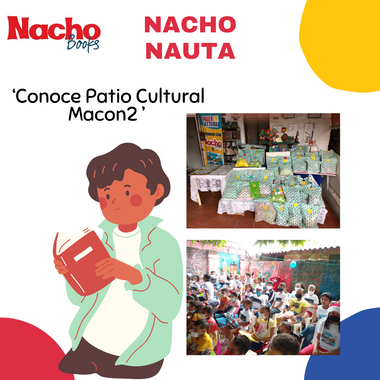For children who have already started to read, reading comprehension can be quite difficult to understand. Children sometimes have trouble remembering what they read. Similarly, they cannot understand individual words, have limited knowledge of vocabulary, and their reading fluency can be poorly developed.
What is reading comprehension and why is it important?
Reading comprehension is understanding what a particular text means and the ideas the author is trying to convey, both textual and subtextual. To read any text, the brain must process not only the literal words of the text, but also their relationship to each other, and the context behind the words. Also, when reading one must understand how subtle language and use of vocabulary can impact the emotion and meaning behind the text.
How we can help our children with reading comprehension:
- “Relate to the text. When children connect what they already know with what they read, it helps them focus a lot better. For example, ask them if they have been to a place that the text mentions or if they have seen something they read.
- Ask questions.
Asking questions encourages children to look for clues in the text. As you read together, ask questions to pique your child's curiosity. Ask things like "What do you think will happen?" or "How does that character feel?"
- Make "mind movies."
Visualizing helps bring a story to life. When reading with your child, describe what the scene looks like in their head. Talk about how it makes you feel. You can also use other senses. For example, if the scene takes place outdoors, what does it smell like?
- 4. Look for clues.
When you combine what you already know with clues from a story, you can make guesses or predictions. These are inferences. Making inferences is a great way to develop reading comprehension. If a character is wearing gym clothes and sweats, ask your child what they could have been doing before.
- Find out what is important. Ask your child: Who are the main characters? What is the most important thing that has happened in history so far? What problem are the characters trying to solve? When children can point out what is important, they are more likely to understand what they read.”
Practice with reading comprehension using the book Leo y Escribo 1
In order to put all of this into practice, Leo y Escribo 1 has many short stories that you can use with your child or student to practice reading comprehension. For example, pages 134 and 135 focus on the literary understanding of a landscape. Children will have to read the text and then draw what they read. This reading is very practical as it is very descriptive and helps children to think about all the details that make up the text.
Subscribe to Rincón del Nacho Nauta for more activities and how to use our Nacho books!
Written by: Valeria Flores. University of California Los Angeles. Bachelor of Arts in Spanish and Linguistics. Bilingual teacher.
Inspired By: Ginny Osewalt On 7 Tips To Help Kids Understand What They Read




 How to Encourage My Child to Express Themselves
How to Encourage My Child to Express Themselves
 How Do Other Countries Celebrate Halloween?
How Do Other Countries Celebrate Halloween?
 Learn more about the Patio Cultural Macon2 foundation!
Learn more about the Patio Cultural Macon2 foundation!
 ¡Conoce más sobre la fundación Patio Cultural Macon2!
¡Conoce más sobre la fundación Patio Cultural Macon2!
 Nacho's work in Colombia!
Nacho's work in Colombia!
 ¡La labor de Nacho en Colombia!
¡La labor de Nacho en Colombia!
 Christmas Traditions of Latin America
Christmas Traditions of Latin America

